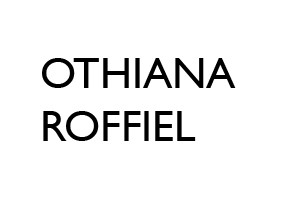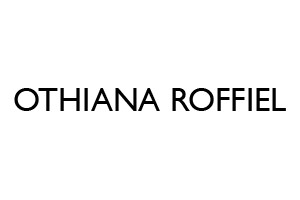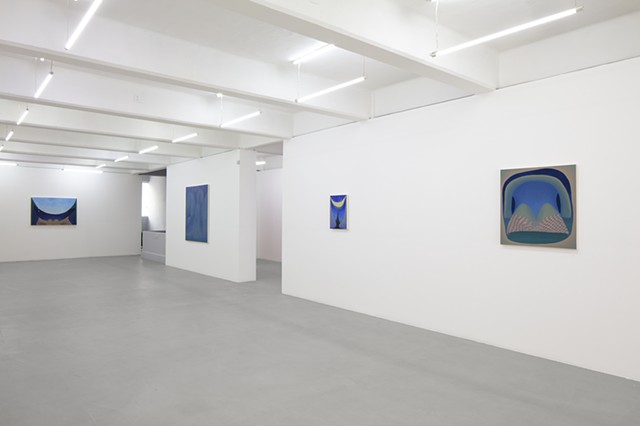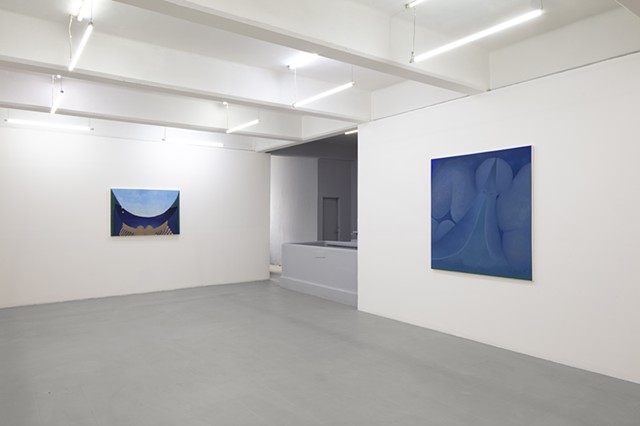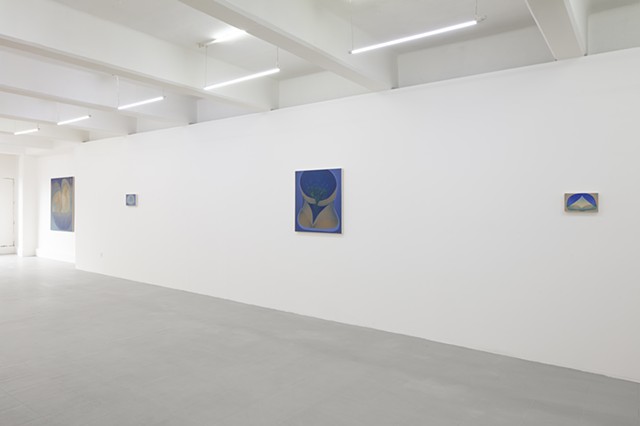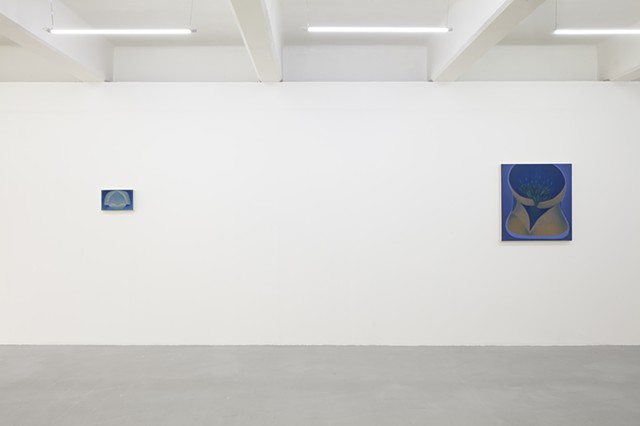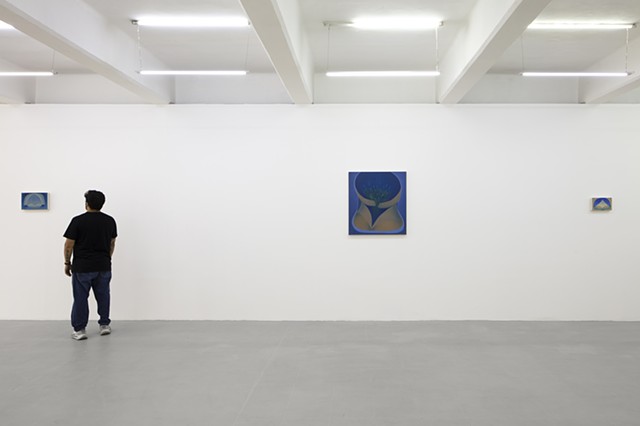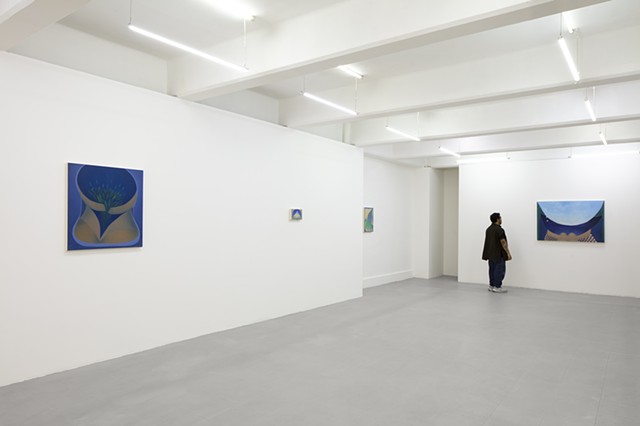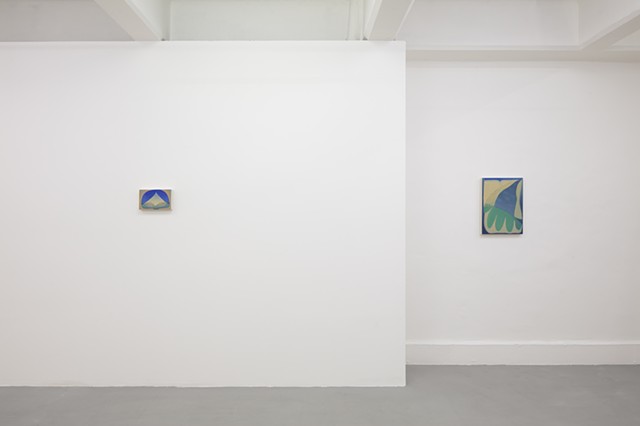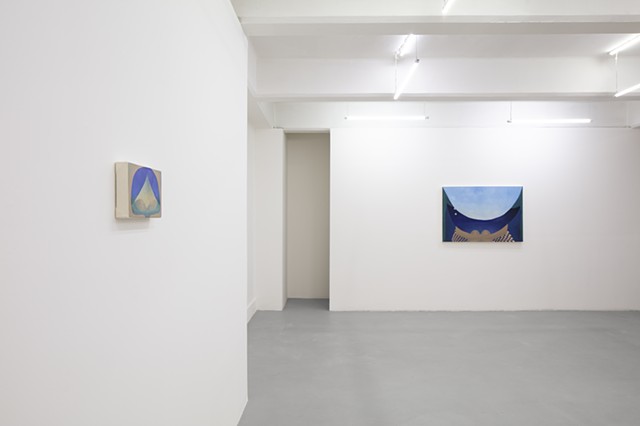"Rehearsal of Becoming" Galería Karen Huber, Mexico City, 2023
I live in the world. I look, I see things move, I'm aware of forces and equilibriums..
Philip Guston
Following her first solo show in the summer of 2021, Othiana Roffiel returns to Galería Karen Huber with Rehearsal of Becoming, an exhibition in which she presents a body of work that, despite strong links with the pieces preceding it, demonstrates the evolution of her increasingly fresh and personal cosmology, which she has brought to this point thanks to her commitment to a continuous zeal for discovery and inquiry. In this process she has left aside photographic references (an unusual gesture in a world governed by images) in order rather to resort exclusively to memory, imagination, and the subconscious, allowing her to approach both her external and internal worlds with a basis in a highly corporeal intuition, thanks to which she has come to understand that what is outside shapes us, and vice versa. Thus, in establishing (and sustaining) this methodology in which, by painting without tangible references, the artist constantly faces the unknown and the uncertainty of her own aesthetic becoming, Othiana has had to learn to work in discomfort—as well as abide by curiosity and wonder—in order to allow the painting itself to surprise her.
These processes have resulted in enigmatic pictorial scenarios that exist outside of fixed categories and that are in a fluid and transitional state, one that is then reflected in the changes of time, between dawn and dusk, as well as in the fragmented and amorphous bodies that are presented in them, and whose processes of metamorphosis call into question their human, botanical, celestial, aqueous, and geometric condition, and which in turn create multiple narrative possibilities. The questions remain open: What will they develop into and when? Where do they come from and where are they going?
The bodies in Othiana's pieces exist in osmosis with the universes they inhabit, reminiscent of a genealogy of women artists such as Georgia O'Keeffe and Tarsila do Amaral, whose practices focus on exploring the body–nature relationship. Nevertheless, the elements in the artist's paintings not only constitute the landscape, but also contain and frame these ecosystems, and are then reconfigured in relation to them. These kinds of reconfigurations also bring to mind the "body extensions" that artist Rebecca Horn began to construct in the late sixties: sculptures for the body, comparable to prostheses, that explore the movements of transformation between body and machine. In turn, these transmutations can prompt questions about the degree of influence we have over our own bodies and processes, as well as the role this plays in the construction of self, which can be contextualized in the contemporary notion of "corporeal agency"—explored via not only art but also other disciplines.
Nevertheless, the corporealities that are present in Othiana's paintings experience the paradox of their own occurrence: on the one hand, they exercise control over themselves, and yet, on the other hand, they recognize their lack of control in the face of the unknown and the forces that shape, affect, and transcend them. In this way, the bodies in Othiana's work are actors in the rehearsal of their own becoming, just like those of us who observe them. The notion of bodily agency is constantly transforming.
Othiana relates to her creative process via this same understanding of agency (both her own and that of the painting) and once again places herself right in the paradox, recognizing and embracing the contingent nature of the work. That is, she recognizes the probability that something will take place or not, that unforeseen elements can emerge at any time. Thus, she goes back and forth between control and the lack of it, which she achieves thanks to the diversity of her visual language and its handling. This plurality ranges from more abstract elements—a reverberation of the years in which Othiana explored Abstractionism at the beginning of her career—to more figurative elements: but, above all, it plays with the possibilities that exist between them.
In this way, her artistic proposal includes a mixture of motifs, some bearing strong symbolism, and yet at the same time influenced by a merely formalist interest. Despite the recurrence of these motifs, what takes place in Rehearsal of Becoming shows us the impossibility of their repetition, since they are constantly being recombined, reconfigured, and pollinated by the contexts they inhabit, contain, and frame. Nevertheless, her aesthetic repertoire is not only constituted by the motifs she paints, but also by how she paints them. Othiana is an artist who understands very well that painting is not an image but rather a body, which is why her visual language is also nurtured by the versatile treatment she gives to the surface of her paintings, as well as by the never–ending chromatic exploration with which—influenced by artists like Amy Sillman—she understands color as more than an optical effect but also as a material, a body. We connect with what we see in the painting, but also with the sensation it provokes in us owing to the way it is painted.
This connection, which transcends the rational and comes from a more bodily awareness, is capable of generating a contemplative sensation in her work. Nevertheless, Othiana does not arrive there from spiritual or philosophical currents, such as Anthroposophy in the case of Hilma af Klint, or from the search for transcendence as in artists like Angess Pelton, despite her ties with the work of both. Rather, it is the natural result of opening up to the sensitivity necessary for being in greater contact with her environment, especially nature, as well as her subconscious. For this reason, although her paintings do tend to give a glimpse of the mystical, they can also be light and playful.
Although we conceive the pieces presented here as finished, they display an openness to experimentation that only rehearsal allows: in this respect, they are scenarios that explore the multiple ways of coming–to–be, and it is thus that, through the freedom provided by understanding the transitive nature of pictorial becoming, we can connect with that of our own becoming, and approach both as an infinite rehearsal.
